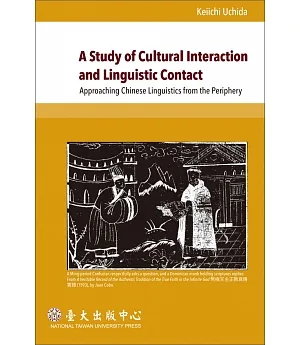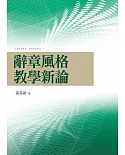序論
Introduction: A Peripheral Approach to Chinese Linguistics as a Contribution to the Study of Cultural Interaction
The notion of the studyof cultural interaction in East Asia is not yet well rooted in society, but the group to which I belong, the Institute for Cultural Interaction Studies at Kansai
University (a 2007 Global Center of Excellence program of the Ministry of Education, Culture, Sports, Science, and Technology) seeks to establish this field of study as a new framework for
studying East Asia. Our basic understanding of the content of this framework is as follows.
Traditionally, the study of cultural interaction, for instance, the study of the history of Sino-Japanese interaction, was conducted within a national framework involving two countries and in
the various fields of study, such as linguistics, thought, ethnography, religion, literature, and history. Consequently, knowledge was compartmentally accumulated in separate journals and
publications, with the result that there was a lack of understanding of the complete picture of cultural interaction. Our new framework for studying cultural interaction, in contrast, seeks to
transcend nations and separate fields of study. It presupposes that East Asia is a complex cultural unit requiring us to look at the development, spread, transmission, and content of culture
within the whole region, in order to clarify the total picture of East Asian cultural interaction from a multiperspective, comprehensive point of view.
And to establish our new framework of study, one of the methods we use is the peripheral approach. But as we are using the notion, “periphery” refers to more than the geographical periphery.
The relationship of periphery and center can also be found in various fields of academic study, such as the field of Chinese linguistics. Moreover, the relation between periphery and center is
not fixed; rather, the boundary between periphery and center is flexible and varies over time—a possibility that we must bear in mind.
This great effort at creating a framework for studying cultural interaction has, of course, just begun, and our present multidisciplinary frame of reference does not offer a single answer to
the question of just what the field of cultural-interaction studies is. Going forward, we must engage in discussion to accumulate concrete results that can support a new framework for studying
intercultural interaction. What this work seeks to offer is an example of a solution to this challenge from the perspective of the field of Chinese linguistics.
1 An Approach from the Periphery
When we look at only the center of a phenomenon, we often cannot grasp its true nature. The eye of a typhoon is calm, while the winds are raging on the periphery. Traditional sayings have put
the matter well. In Japan we have the saying “It is dark at the base of the candlestick” 灯台下暗し, and also the saying “[In the game of go] the onlooker can see eight moves in advance”岡目八目.
Moreover, the Chinese have the sayings “The go player is at a loss while the onlooker is clear” 當局者迷,旁觀者清and “One does not see the true face of Mt. Lu when one is on the mountain”
不識廬山真面目,只緣身在此山中.
The relation between periphery and center can be considered from various perspectives. One such perspective is that of Zhu Dexi 朱德熙, who speaks of “comparative contrasts”:
Q What are the special features of Chinese grammar? I have always been puzzledby this question. May I ask your opinion here?
A Special features become clear in the comparison. If there is no comparison, there are no special features. Hence, if you ask what the special features of Chinese grammar are, you
first have to specify what language you are going to compare Chinese to. (1985, p. 2)
Yet today’s scholarly research is increasingly segmented, with the result that while scholars might be able to handle the minute details of some particular phenomenon, they are at a loss to
present an overview of the whole. In the field of Chinese grammar as well, research on a particular phenomenon is becoming increasingly subtle. While this is progress of a sort, systematic
discussions of the whole of Chinese grammar are being neglected. The situation is one where scholars delve directly into such matters as the acceptability of having了twice in a predicate, the
nature of the progressive 在, the circumstances when 的is necessary and when it is not, and the distinction between a verbal complement and a conjoined adjective (details that admittedly need
elucidating), while neglecting to explain such basic notions as those of a sentence, a subject, or a predicate. Even more important, such basic questions as what is language are omitted.
Missing is a view of language, or even a view of the world, to exaggerate. Can this really be called progress?
Recently, interdisciplinary and extradisciplinary studies have become quite popular. Though this is to be expected, interdisciplinary studies cannot be the established paradigm from the
start. After all, interdisciplinary studies are possible only after specialized fields of study have become established. We must remember that interdisciplinary and extradisciplinary studies
not based on specialized fields of study lack roots.
In any case, for over ten years we have advocated this peripheral approach and have carried out research in Chinese linguistics based on this approach. Below I will again present my views as
to the validity of this approach in linguistic research, and in particular, in research on grammar.



















![狀元字音字形全攻略[新修版]](https://www.books.com.tw/image/getImage?i=https%3A%2F%2Fwww.books.com.tw%2Fimg%2F001%2F085%2F42%2F0010854214.jpg&width=125&height=155)

